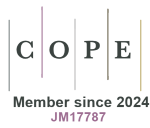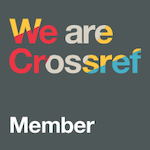A Budget impact analysis of pegfilgrastim biosimilar in the treatment of febrile neutropenia in Italy
Analisi di budget impact del biosimilare di pegfilgrastim nel trattamento della neutropenia febbrile in Italia
DOI:
https://doi.org/10.33393/abtpn.2020.2030Keywords:
Biosimilar, Cost, G-CSF, Italian NHS, PegfilgrastimAbstract
Introduction: Granulocyte-colony stimulating factors (G-CSFs) can significantly reduce the risk of febrile neutropenia (FN) among certain patients receiving chemotherapy. FN is associated with significant clinical and nonclinical complications. At present, the patent protection of pegfilgrastim (Neulasta®) has expired, and a biosimilar (Ziextenzo®) has been approved. Since the biosimilar price is expected to be lower as compared with the originator’s, the present Drug Budget Impact analysis tries to evaluate whether and how much profitable the biosimilar availability will be for the Italian NHS, in terms of cost containment (savings).
Methods and Results: The model time horizon extends to five years. The initial overall number of treatments with pegfilgrastim is estimated based on the number of pegfilgrastim packages (assuming a recommended dose of 6 mg is administered after each cytotoxic chemotherapy) and kept constant in time. The model assumes that, year by year, the number of treatments with the originator will partly switch to the biosimilar (according to an uptake rate assumed). The results show that the availability of the biosimilar would provide an €6.4 million cumulated savings to the NHS in the five years.
Conclusions: According to the present analysis, the availability of the biosimilar would generate cumulated savings (in five years) as high as €6.4 million for the Italian NHS.
(HTA & Market Access)
References
- Weycker D, Barron R, Edelsberg J et al. Risk and consequences of chemotherapy-induced neutropenic complications in patients receiving daily filgrastim: the importance of duration of prophylaxis. BMC Health Serv Res. 2014;14:189.
- Bennett CL, Djulbegovic B, Norris LB, Armitage JO. Colony-stimulating factors for febrile neutropenia during cancer therapy. N Engl J Med. 2013;368(12):1131–39.
- National Comprehensive Cancer Network. Clinical practice guidelines in oncology (NCCN Guidelines). Prevention and treatment of cancer-related infections. 2017. Disponibile sul sito: https://www.nccn.org/professionals/physician_gls/f_guidelines.asp. Accesso: Dicembre, 2019.
- Culakova E, Thota R, Poniewierski MS et al. Patterns of chemotherapy-associated toxicity and supportive care in U.S. oncology practice: a nationwide prospective cohort study. Cancer Med. 2014;3(2):434–44.
- Italian AIOM Guidelines 2019. Gestione della tossicità ematopoietica in oncologia. Disponibile sul sito: https://www.aiom.it/wp-content/uploads/2019/10/2019_LG_AIOM_Toss_Ematopoietica.pdf Accesso: Gennaio 2020.
- Crawford J, Dale DC, Kuderer NM et al. Risk and timing of neutropenic events in adult cancer patients receiving chemotherapy: the results of a prospective nationwide study of oncology practice. J Natl Compr Canc Netw. 2008;6(2):109–18.
- Kuderer NM, Dale DC, Crawford J et al. Mortality, morbidity, and cost associated with febrile neutropenia in adult cancer patients. Cancer. 2006;106(10):2258–66.
- Dulisse B, Li X, Gayle JA et al. A retrospective study of the clinical and economic burden during hospitalizations among cancer patients with febrile neutropenia. J Med Econ. 2013;16(6):720–35.
- Michels SL, Barron RL, Reynolds MW et al. Costs associated with febrile neutropenia in the U.S. Pharmacoeconomics. 2012;30(9):809–23.
- Lyman GH, Dale DC, Crawford J. Incidence and predictors of low dose-intensity in adjuvant breast cancer chemotherapy: a nationwide study of community practices. J Clin Oncol. 2003;21(24):4524–31.
- Shayne M, Crawford J, Dale DC et al. Predictors of reduced dose intensity in patients with early-stage breast cancer receiving adjuvant chemotherapy. Breast Cancer Res Treat. 2006;100(3):255–62.
- National Comprehensive Cancer Network. Clinical practice guidelines in oncology (NCCN Guidelines). Myeloid growth factors. 2017. Disponibile sul sito: https://www.nccn.org/professionals/physician_gls/f_guidelines.asp. Accesso: Dicembre 2018.
- Smith TJ, Bohlke K, Lyman GH et al. Recommendations for the use of WBC growth factors: American Society of Clinical Oncology Clinical Practice Guideline update. J Clin Oncol. 2015;33(28):3199–212.
- Aapro MS, Bohlius J, Cameron DA et al. 2010 update of EORTC guidelines for the use of granulocyte-colony stimulating factor to reduce the incidence of chemotherapy-induced febrile neutropenia in adult patients with lymphoproliferative disorders and solid tumours. Eur J Cancer. 2011;47(1):8–32.
- Aapro M, Boccia R, Leonard R et al. Refining the role of pegfilgrastim (a long-acting G-CSF) for prevention of chemotherapy-induced febrile neutropenia: consensus guidance recommendations. Support Care Cancer. 2017;25(11):3295–304.
- Shimazaki C, Oku N, Uchiyama H et al. Effect of granulocyte colony-stimulating factor on hematopoietic recovery after peripheral blood progenitor cell transplantation. Bone Marrow Transplant. 1994;13(3):271–5.
- Vanderpuye-Orgle J, Sexton Ward A, Huber C et al. Estimating the social value of G-CSF therapies in the United States. Am J Manag Care. 2016;22(10):e343–9.
- Edelsberg J, Weycker D, Bensink M et al. Prophilaxis of febrile neutropenia with colony-stimulating factors: the first 25 years. Curr Med Res Opin. 2019;29:1–13.
- Chen ML, Shah V, Patnaik Ret al. Bioavailability and bioequivalence: an FDA regulatory overview. Pharm Res. 2001;18:1645–50.
- European Medicine Agency. Committee for Medicinal Products for Human Use (CHMP). Guidelines on Similar Biological Medicinal Products. CHMP/437/04, London, 2005. Disponibile sul sito: http://www.ema.europa.eu/docs/en_GB/document_library/Scientific_guideline/2009/09/WC500003517.pdf. Accesso: Dicembre 2019.
- European Medicine Agency. Guidelines on Similar Biological Medicinal Products, 2014. Disponibile sul sito: http://www.ema.europa.eu/docs/en_GB/document_library/Scientific_guideline/2013/05/WC500142978.pdf. Accesso: Dicembre 2019.
- European Medicine Agency. Guideline on similar biological medicinal products containing biotechnology-derived proteins as active substance: non-clinical and clinical issues, 2013. Disponibile sul sito: http://www.ema.europa.eu/docs/en_GB/document_library/Scientific_guideline/2013/06/WC500144124.pdf. Accesso: Dicembre 2019.
- Farmaci Biologici E Biosimilari. Scenari terapeutici e stima del risparmio per il Sistema Sanitario italiano. Centro Studi ICVIA Italia. Disponibile sul sito: http://magazine.imshealth.it/report/(IQVIA)_Farmaci_biologici_e_biosimilari.pdf. Accesso: Marzo 2019.
- Sandoz, data on File.
- Mauskopf JA, Sullivan SD, Annemans L et al. Principles of good practice for budget impact analysis: report of the ISPOR Task Force on Good Research Practices—budget impact analysis. Value Health. 2007;10(5):336–47.
- Sullivan SD, Mauskopf JA, Augustovski F et al. Budget impact analysis principles of good practice: report of the ISPOR 2012 Budget Impact Analysis Good Practice II Task Force. Value Health. 2014;17(1):5–14.
- Marcellusi R, Viti R, Capone A et al. Costi diretti e indiretti assorbiti dalle patologie HCV-indotte in Italia: stima basata su una metodologia probabilistica di Cost of Illness. PharmacoEcon Ital Res Artic. 2014, online, DOI 10.1007/s40276-014-0023-9.
- McBride A, Campbell K, Bikkina M et al. Cost-efficiency analyses for the US of biosimilar filgrastim-sndz, reference filgrastim, pegfilgrastim, and pegfilgrastim with on-body injector in the prophylaxis of chemotherapy-induced (febrile) neutropenia. J Med Econ. 2017 Oct;20(10):1083–93.
- Sun D, Andayani TM, Altyar A et al. Potential cost savings from chemotherapy-induced febrile neutropenia with biosimilar filgrastim and expanded access to targeted antineoplastic treatment across the European Union G5 countries: a simulation study. Clin Ther. 2015 Apr 1;37(4):842–57.









